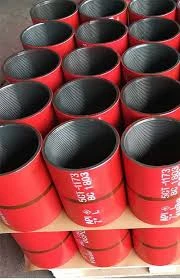- Afrikaans
- Albanian
- Amharic
- Arabic
- Armenian
- Azerbaijani
- Basque
- Belarusian
- Bengali
- Bosnian
- Bulgarian
- Catalan
- Cebuano
- Corsican
- Croatian
- Czech
- Danish
- Dutch
- English
- Esperanto
- Estonian
- Finnish
- French
- Frisian
- Galician
- Georgian
- German
- Greek
- Gujarati
- Haitian Creole
- hausa
- hawaiian
- Hebrew
- Hindi
- Miao
- Hungarian
- Icelandic
- igbo
- Indonesian
- irish
- Italian
- Japanese
- Javanese
- Kannada
- kazakh
- Khmer
- Rwandese
- Korean
- Kurdish
- Kyrgyz
- Lao
- Latin
- Latvian
- Lithuanian
- Luxembourgish
- Macedonian
- Malgashi
- Malay
- Malayalam
- Maltese
- Maori
- Marathi
- Mongolian
- Myanmar
- Nepali
- Norwegian
- Norwegian
- Occitan
- Pashto
- Persian
- Polish
- Portuguese
- Punjabi
- Romanian
- Russian
- Samoan
- Scottish Gaelic
- Serbian
- Sesotho
- Shona
- Sindhi
- Sinhala
- Slovak
- Slovenian
- Somali
- Spanish
- Sundanese
- Swahili
- Swedish
- Tagalog
- Tajik
- Tamil
- Tatar
- Telugu
- Thai
- Turkish
- Turkmen
- Ukrainian
- Urdu
- Uighur
- Uzbek
- Vietnamese
- Welsh
- Bantu
- Yiddish
- Yoruba
- Zulu
Bull Plug Pipe Fitting - Durable Solutions for Seamless Piping Systems
Understanding Bull Plug Pipe Fittings
Bull plug pipe fittings are essential components in piping systems, designed to seal openings or block flow in various industrial applications. Typically made from materials such as steel, brass, or plastic, these fittings serve a crucial role in ensuring the integrity and safety of piping networks.
Understanding Bull Plug Pipe Fittings
The versatility of bull plugs makes them invaluable in situations where maintenance or modifications are necessary. For instance, in many systems, sections of piping need to be taken offline for repairs or upgrades. By using bull plugs, operators can securely seal off sections of the piping without having to completely dismantle the system. This not only saves time but also minimizes downtime, ultimately contributing to more efficient operations.
bull plug pipe fitting

Moreover, bull plugs are often utilized in temporary applications. For example, when testing a new pipeline or during the construction phase, these fittings can be used to seal off portions of the system to ensure that it is leak-free before it goes into service. This testing phase is critical, as it helps to identify potential issues that could lead to costly leaks or failures down the line.
In addition to their practical applications, bull plugs are designed to adhere to industry standards, ensuring safety and reliability. When selecting a bull plug for a specific application, it is essential to consider factors such as the material, size, and pressure rating. Proper selection and installation are vital to maximize the performance and longevity of the piping system.
In conclusion, bull plug pipe fittings play a fundamental role in the maintenance and operation of piping systems across various industries. Their effective sealing capability, ease of use, and adaptability make them a staple in the toolkit of engineers and maintenance professionals. By ensuring proper sealing and facilitating maintenance, bull plugs contribute significantly to the safety and efficiency of fluid transport systems worldwide.
-
Tubing Pup Joints: Essential Components for Oil and Gas OperationsNewsJul.10,2025
-
Pup Joints: Essential Components for Reliable Drilling OperationsNewsJul.10,2025
-
Pipe Couplings: Connecting Your World EfficientlyNewsJul.10,2025
-
Mastering Oilfield Operations with Quality Tubing and CasingNewsJul.10,2025
-
High-Quality Casing Couplings for Every NeedNewsJul.10,2025
-
Boost Your Drilling Efficiency with Premium Crossover Tools & Seating NipplesNewsJul.10,2025







